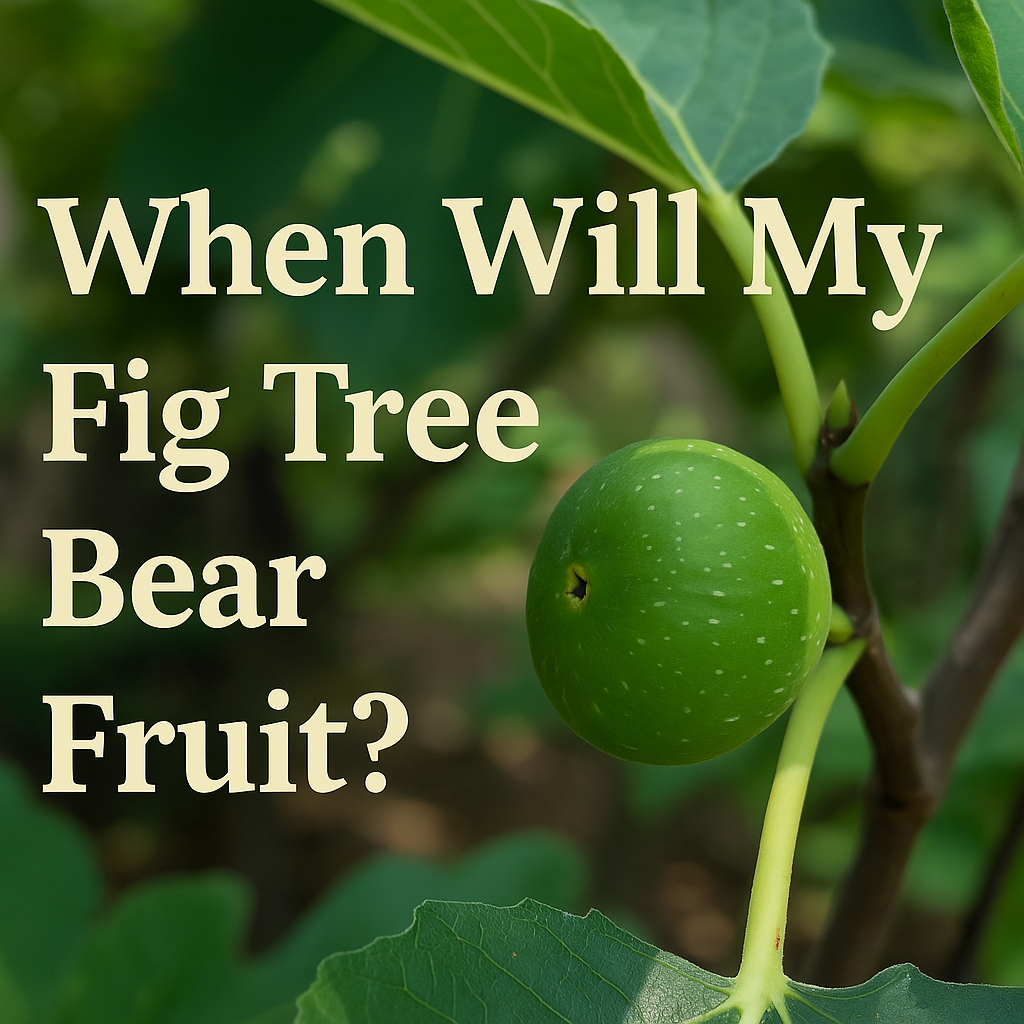Growing Figs
When Will My Fig Tree Bear Fruit?
What to Expect, What to Celebrate, and Why It’s Worth the Wait
Let’s be honest—when you plant a fig tree, you’re not just planting a tree. You’re planting hope. You’re imagining sun-warmed figs right off the branch, soft and jammy, maybe with bees buzzing lazily in the background. So it’s only natural to ask, “Okay, when do I get the fruit?”
Let me explain.
First, a Little Reality Check (It’s Not Bad News)
Here’s the thing: fig trees don’t all follow the same schedule. Your friend might brag that their fig gave fruit its first summer. Meanwhile, yours might be leafing out like a champ but holding out on the goods. And you might wonder—did I do something wrong?
You didn’t. Promise.
Whether a fig tree fruits its first year, its third, or somewhere in between mostly comes down to how it was propagated, your growing conditions, and a bit of figgy personality.
The Fast Track: Buying a Live, Rooted Tree
If you bought a healthy, established fig tree from a nursery like ours—something already pushing a year old or more—you’re in luck. There’s a good chance it’ll produce fruit in its very first season, especially if it’s planted in spring and gets good sun.
This is one of the biggest perks of buying a rooted tree instead of starting from a cutting or seed. You’re skipping the toddler years. You’re jumping straight into that “teenage” phase where the tree is old enough to flirt with fruiting—sometimes seriously.
And while we can’t guarantee a harvest in year one (nature’s got her own calendar), we’ve seen it happen time and again. Especially with figs like Black Madeira, I-258, and Celeste—these guys don’t mess around.
The Long Game: Starting from Cuttings or Seeds
Now, if you’re the kind of person who likes a challenge and started from a cutting—or even a seed (you brave soul)—you’re looking at 2 to 5 years before your first real crop. Maybe less if you’re really dialed in with light, water, and soil.
Cuttings have to root, then grow, then mature. It’s like raising a puppy into a dog before it learns how to hunt truffles. There’s a beautiful kind of satisfaction in that, but it’s not the fast lane. It’s the scenic route.
Seeds are even less predictable—because they don’t grow true to type. That means you might end up with a tree that never fruits at all… or one that gives tiny figs that aren’t worth the wait.
So yeah—live trees? Big head start.
A Quick Timeline to Keep You Grounded (and Excited)
-
Months 1–3: Your tree gets established. Lots of root growth, leaf production, maybe some stretching toward the sun.
-
Months 4–6: You might see the start of tiny figlets forming at the leaf nodes. Not all will hold. That’s okay.
-
Months 6–12: If conditions are right and your tree is old enough, you could be eating your first fig—especially in warm climates or with a greenhouse head start.
-
Year 2: By now, you’ll almost definitely see a more confident crop. If you don’t, it might be time to assess light, nutrients, or pruning habits.
Climate Makes a Big Difference
Here’s a curveball: even with a mature tree, your local weather can throw off the fruiting timeline.
-
Mild winters and long summers? You’re golden. Figs love Mediterranean-type climates.
-
Short growing season or cold snaps in spring? That can delay or reduce fruiting—though container-grown trees you move indoors can help.
-
Humidity-heavy summers? You’ll still get fruit, but you’ll need to watch for splitting and spoilage.
Pro tip: varieties like Panache (Tiger Fig) or LSU Gold tend to handle humidity better. Choose your fig like you’d choose a car—fit for your terrain.
Want Earlier Figs? Here’s What Helps:
-
Full Sun. 6-8 hours a day. No excuses.
-
Proper Pruning. Remove dead wood and encourage open growth. A fig tree isn’t shy; it needs room to breathe.
-
Balanced Fertilizer. Too much nitrogen = leafy diva, no fruit. Go gentle, especially in year one.
-
Don’t Overwater. Figs hate wet feet. Let ‘em dry out a bit between drinks.
A Little Patience, A Lot of Payoff
There’s something deeply satisfying about waiting for your fig tree to fruit. It’s not instant gratification—it’s more like waiting for bread to rise, or a tomato to ripen on the vine. There’s anticipation. A little suspense. And then—bam—pure sweetness.
And once it starts? Figs don’t just trickle in. They pour. A mature tree can give dozens of fruits per season, sometimes more than once a year if your climate supports a breba crop (that’s the early-season figs that form on old wood).
It’s worth the wait. Truly.
Figfreak Trees Are Built for a Head Start
We grow our trees for folks who want fruit sooner, not later. That means:
-
Live rooted trees grown from old fruiting trees
-
Grown under ideal light and nutrition from the start
-
Shipped ready to thrive with a little care from you
If you want the figgy payoff without the multi-year waiting game, we’ve got you covered.
Final Thoughts: Every Tree Has Its Own Clock
Even if yours doesn’t fruit in year one—don’t stress. It might just be taking its sweet time (pun very much intended). Give it sun. Give it space. Give it a little love.
Because one day, when you bite into that first fig, still warm from the sun… you’ll forget how long it took. You’ll just remember that it was yours.

